


General
This page goes into detail about our test projects, and shares things that did not go well. From the perspective of a concrete contractor, serious garage experiments into “not forming” concrete began in 2009. That is, how can you make pumped concrete behave like a frosty dispenser, but still remain pumpable and not kick too fast? Inline injection of a thickening admixture allows unmodified (thinner, wetter) concrete to do most of the travel though the hose and then discharge as a frosty. But how to make that work?
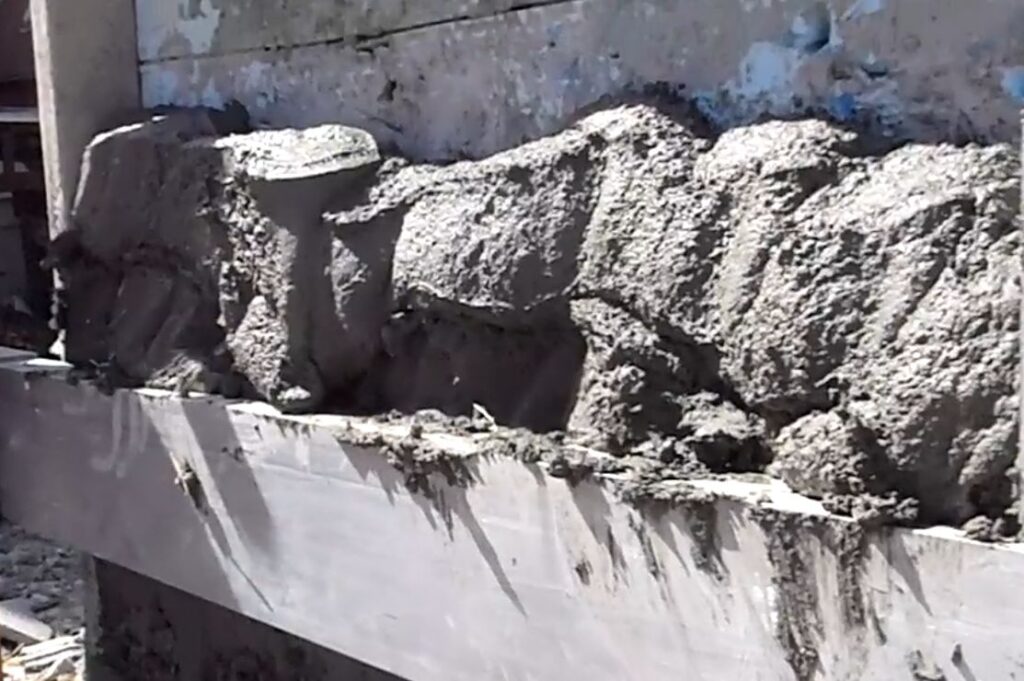
Every thickening ingredient available was tested. Most didn’t work. Of the things that do help “body,” most of them have drawbacks: retard, weaken, wear off, don’t pump, don’t work reliably, high dose, too expensive, or cause shrinkage. After extrapolating to real yardage, most were too expensive, and still didn’t work that well. And most cause shrinkage.
Shrinkage became a critical issue to resolve, because “no form” concrete can be drying out in the breeze and so subject to plastic shrinkage. Every potential component was tested with pure cement and exposed to rapid drying, again and again. This extensive effort really paid off, because the admix evolved into a shrinkage preventer. None of these projects had any plastic shrinkage cracking. Only the Ag Building and the Long Retaining Wall had drying shrinkage cracking, and for the Ag Building it was 2 small cracks total.
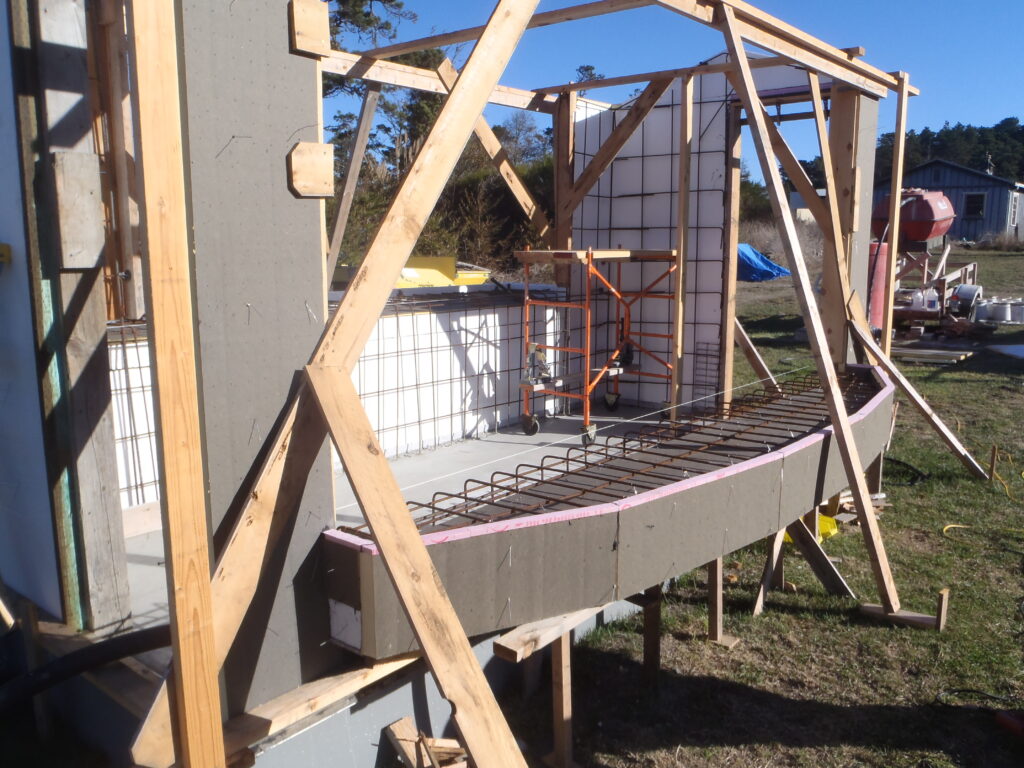
Drainage Box
A perfect small trial that almost justified the concrete truck. Very concerned about pumpability, so we added a lot of surfactant to the concrete – to be sure – which makes the admix-injected concrete very pumpable, stackable, and manipulable, but most surfactants do weaken concrete.
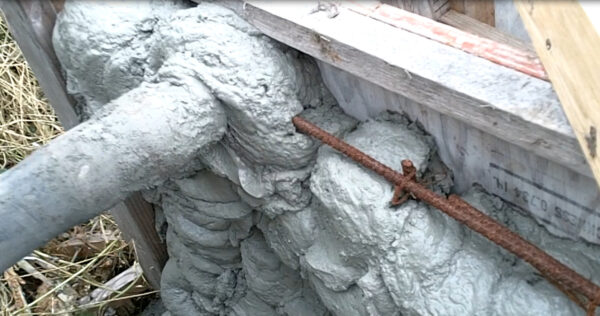

Greenhouse
An insulated-north-wall greenhouse is a very good application, in that you want durable walls that will never rot. This concrete mix was similar to the drainage box – lots of surfactant, and it stacked very easily. We stacked concrete up one small 8’ tall wall in under 3 minutes.
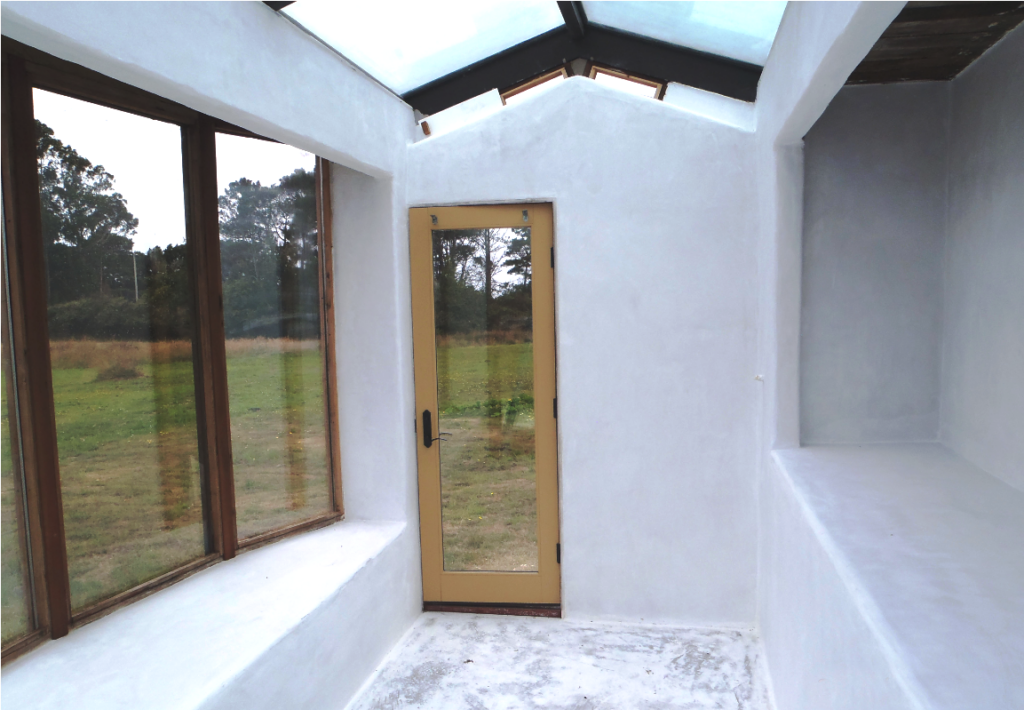
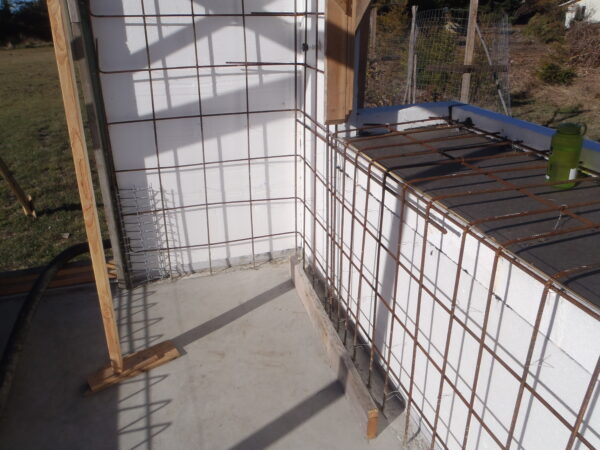
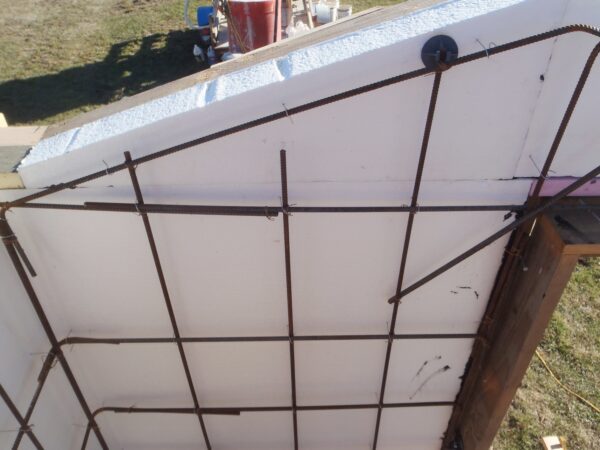
Retrofit Foundation
A hundred-year-old house got new perimeter footings
and stem walls, up to 30” tall (in the back), cast-in-situ
underneath it, right up to an in-place mudsill. We got
rid of most of the surfactants, but then had lots of
problems with the consistency of the mix, pumpability
(a totally blocked 50’ hose), and getting the admix
dose correct, so there was stacking concrete by shovel
after the concrete truck left. It was very difficult,
though we did finish the foundation, and it is very nice
now. No one took photos

Pumphouse
This was a very ambitious project with a goal of
placing concrete for footings, slab, and full-height
walls in one go. It didn’t work, because our first
real try with almost no surfactants caused line
blockages. We did the foundation the first day, but
not the tall walls until the next day – and that was
almost a total failure because we had a very difficult
time with getting the concrete to stack without being
too sticky and unworkable. The concrete was either
too difficult to stack, or too sticky, or too dry, and the
consolidation was poor. A true learning experience,
though this pumphouse will never rot.
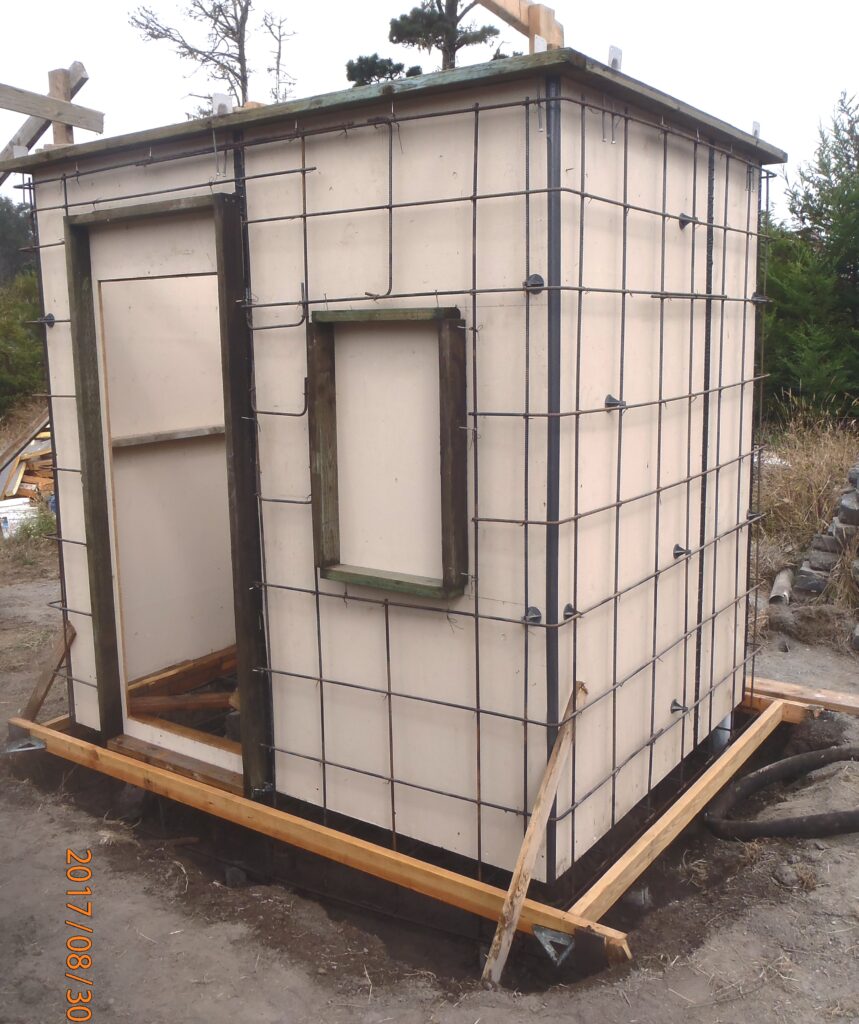


Ag Building
With new knowledge, we set on this 20’ x 40’ building with up to 13’ tall walls, using foam panels out of a dumpster. The concrete mix design was modified to include more fly ash, the equipment upgraded, and the admix modified. We still were on the edge of the concrete being either not stackable quickly enough, or being sticky and difficult to place smoothly. Also, the w/c had to fall in a narrow range, if too much water there was a point of no return – where no amount of admix would make it stackable.

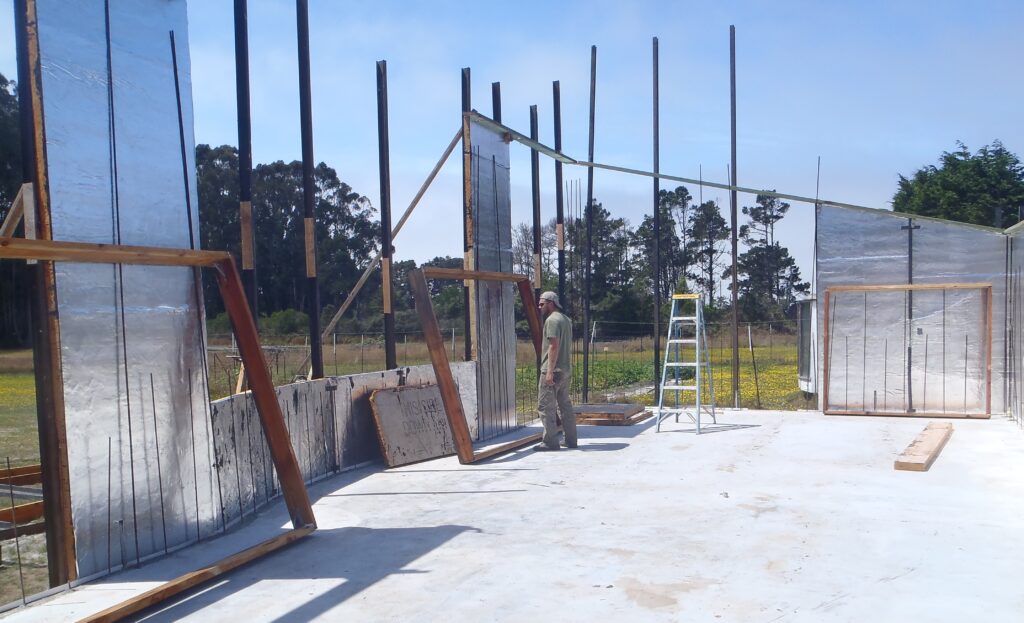
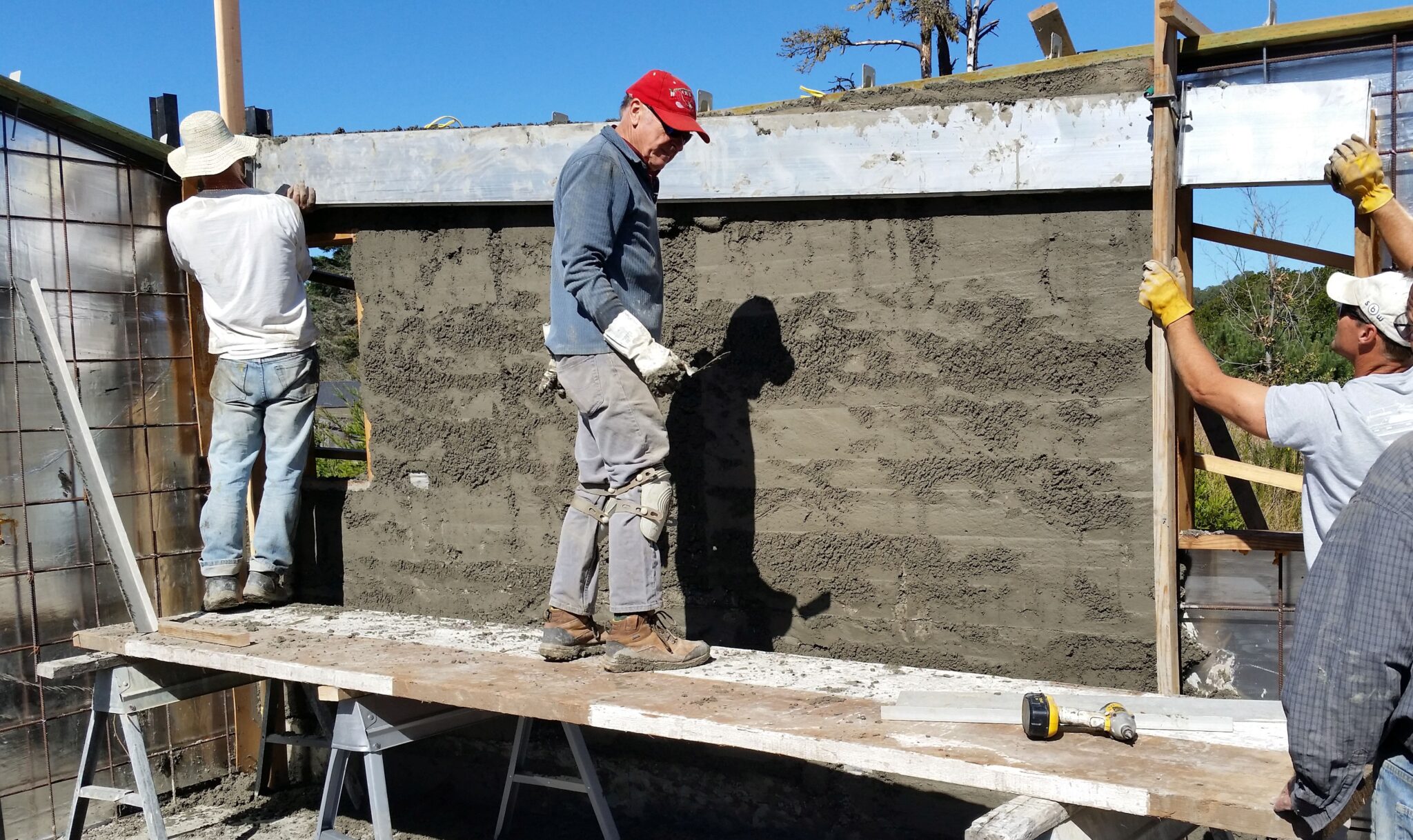
Changes helped – the initial placement went very well – much better than the pumphouse. The concrete consolidated nicely with vibration and held vertically. So more changes were made, then it got worse. We made other changes, and it got worse in different ways. Initially, we had found a narrow window of success, with a drawback being the stickiness which would tear up the surface as we slid the slip screed.
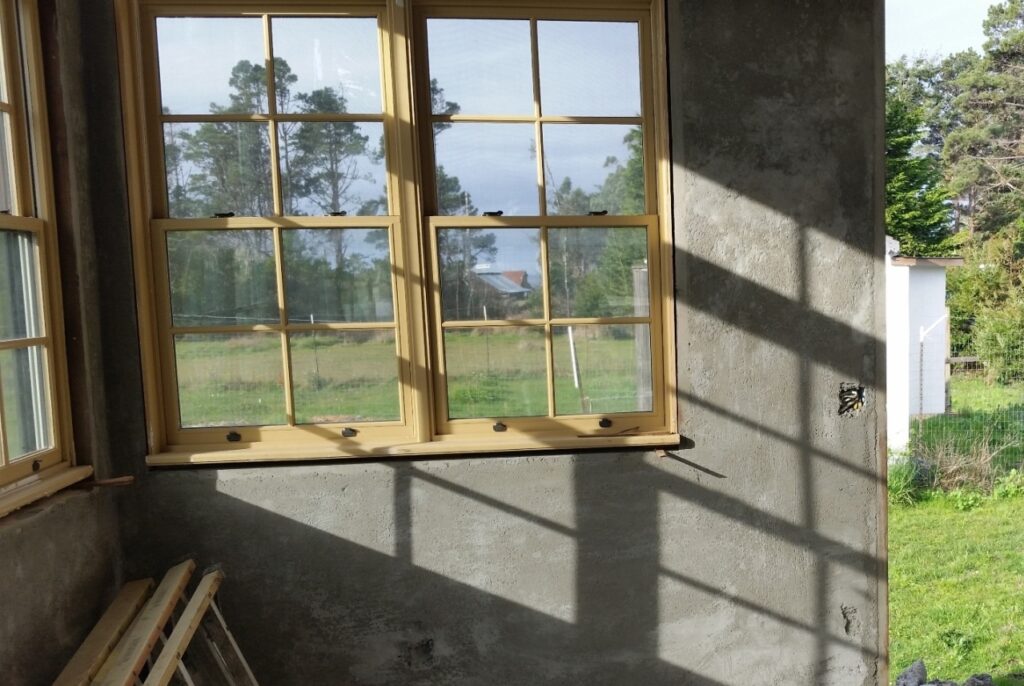
Long Retaining Wall
A few things did not go as planned – such as really wet concrete showing up. Overall, this was a nice success – particularly in improvement to the admix. This time we could get a very-wet almost-self-consolidating concrete to stack vertically. We could not go up the full 3’ wall in one lift – more like 1’ at a time, so excavator had to run back and forth. When the second concrete truck showed up, the mix was not too wet – infact too dry, though we forgot to do the taller lifts with it. This job showed that almost any w/c concrete could be modified to stack – a big break though.


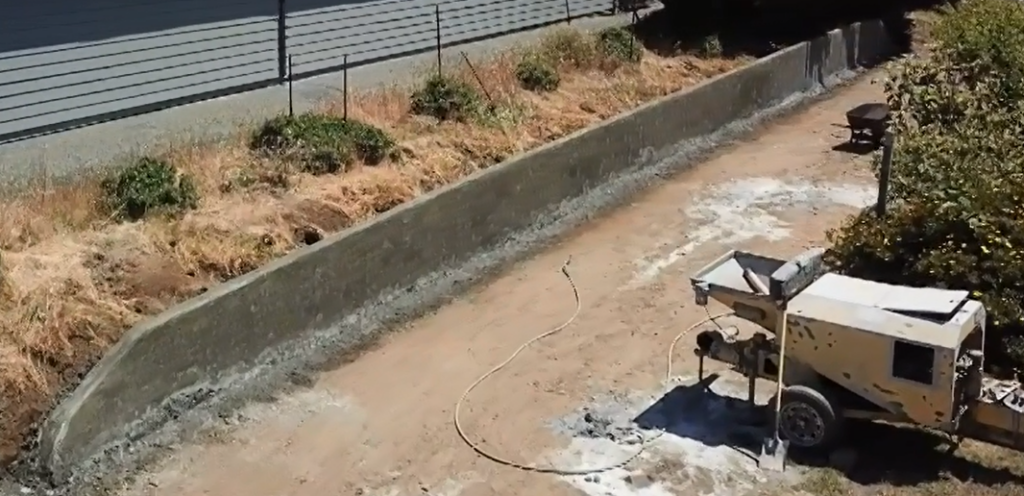
Lab/Shop Building
This project kept the original floor/foundation of an existing wood building that was in bad shape. We had to put a new perimeter foundation around it.

Nearly identical to the size of the Ag Building, this project tested new equipment such as a powered lift platform, a new screed system, and new surface lube system. As usual, the surface lube system had logistical problems, so the lab theory has yet to show field success, and also the concrete surface was again torn up from stickiness. The screed had connection problems, but worked OK.
The admix was generally performing very well in lift v consolidation, but we still had some issues getting immediately dialed into a new truck batch, and some really problematic admix line blockages (because of reduced surfactants). So, another admix revision was warranted, and we did that. The powered hoist worked very well compared to traditional scaffolding etc, but it just shows that automation is the way go.
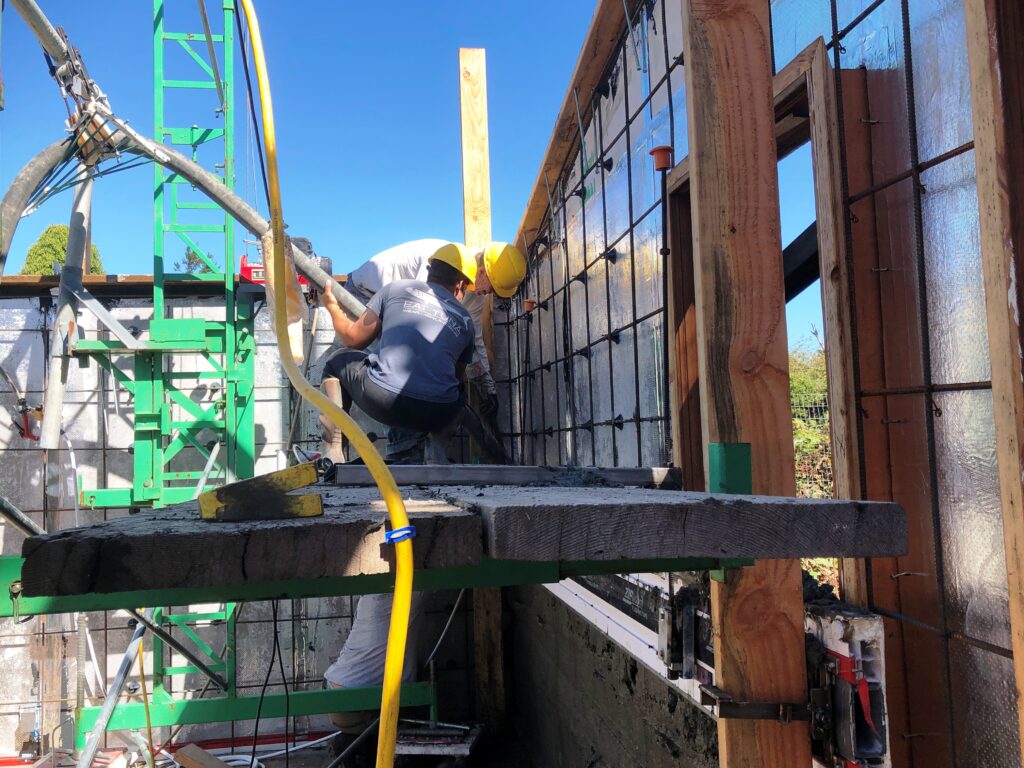
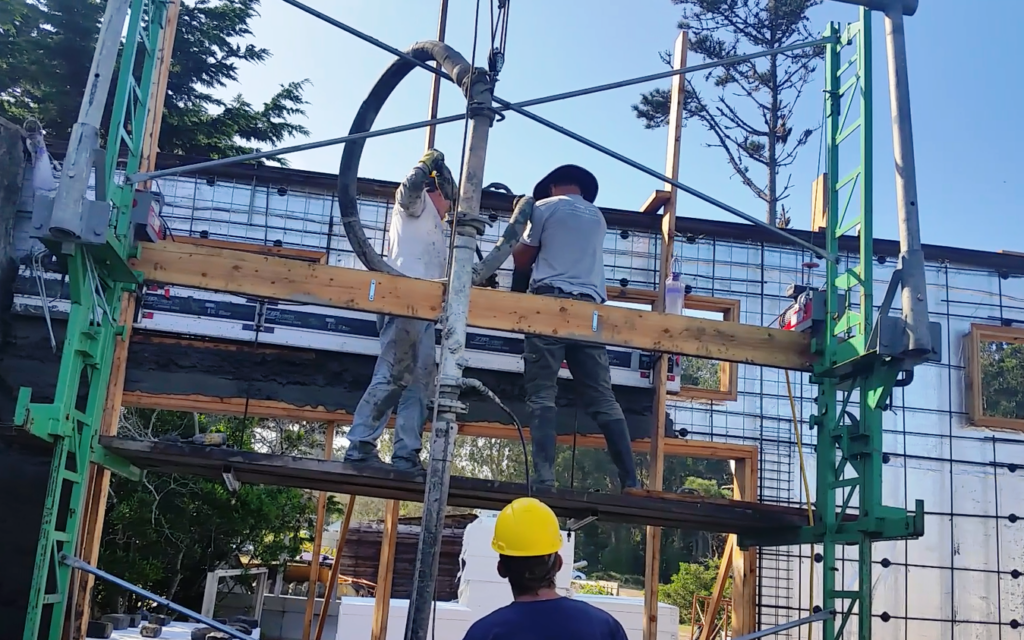

Landing Retaining Walls
After a lot more admix R+D, including extensive admix pumping tests, a total break though surfactant-free admix had emerged. It never got solids-settlement or line blockages. The opportunity to field test was on freestanding stem walls that retain fill, for a large landing. That is, walls slip formed on both sides. We tried just “winging it” with pieces of plywood – not the best idea as it turned out.
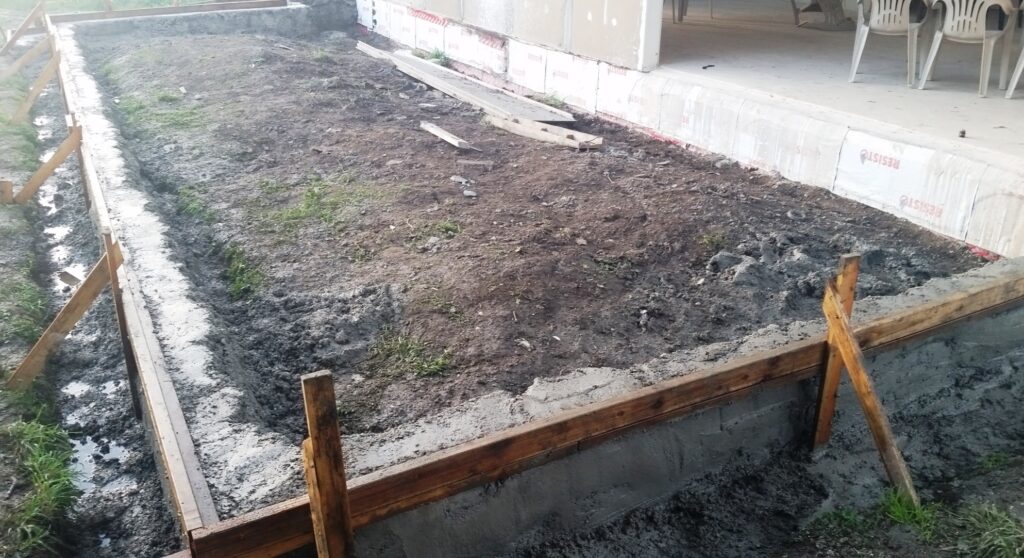
One issue with the new admix was less lubrication. That justifies at least the usual high-dose of fly ash, and a functioning surface-lube system. But on the eve of the concrete arriving, they told us “no more fly ash – only slag”. A quick lab test confirmed that slag does not hurt the vertical build. However, the next day brought information that did not show up in one quick slag test – friction! Slag is a lot more thirsty than fly ash, and not as lubricating. In retrospect, more water should have used, but that did not happen, out of concern about vertical build rate at a very wet site.

The slag actually helps vertical build – but we had continuously sticky problems, making that day really difficult – and it shows in the video. Also, preliminary testing shows that the new admix, while not having effect on the strength of fly-ash-concrete, may reduce the strength of slag-concrete. The new admix concept is here to stay, because it is so reliable and extremely powerful. We know that other SCMs, such as metakaolin, are no problem, and cement-only-concrete is only a problem with stickiness (and increased CO2). We just have to figure out how to deal with slag. Working on it! In any case, 20% fly ash concrete is our best-proven mix design.
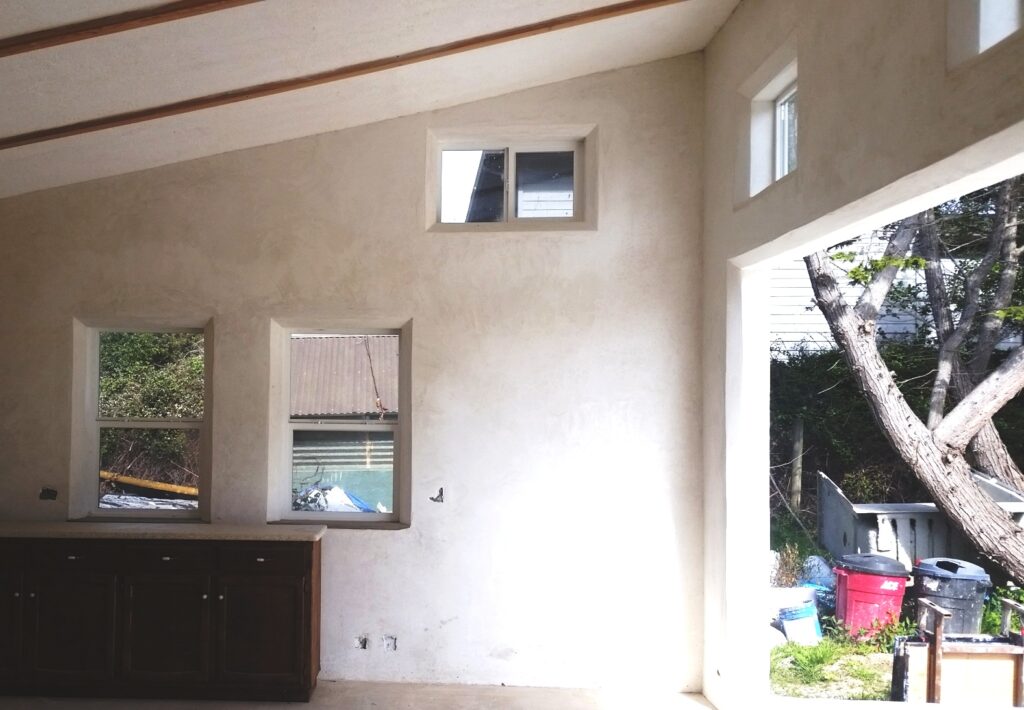
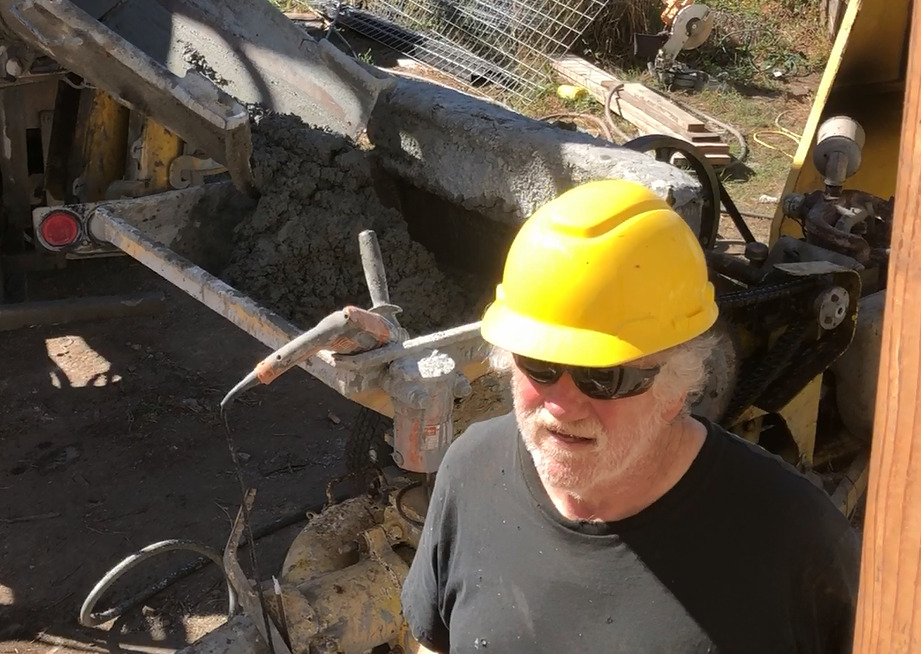
This website was created in the memory of Bob Jerrell.
He was vital and essential to all of these projects.